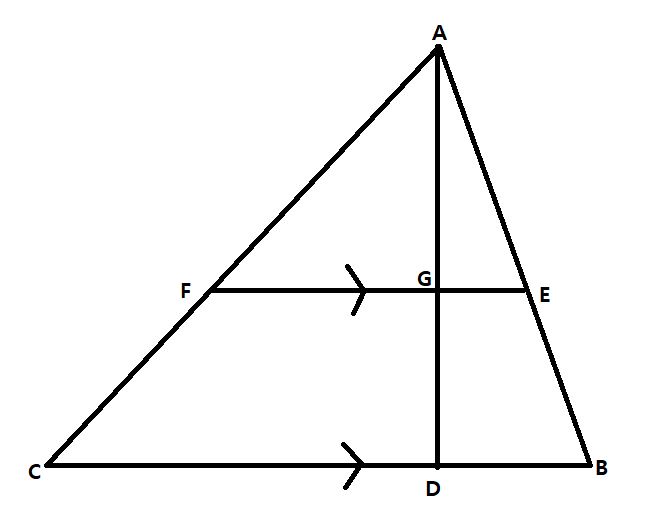Is the following solution correct? If not, why?
The problem: A line parallel to the base of a triangle cuts the triangle into two regions of equal area. This line also cuts the altitude into two parts. Find the ratio of #(GD)/(AG)#

Solution:
#[[ABC]]/[[AEF]]=((AD)/(AG))^2#
#=>2=((AG+GD)/(AG))^2#
#=>sqrt2=(AG+GD)/(AG)#
#=>sqrt2=1+(GD)/(AG)#
#=>sqrt2-1=(GD)/(AG)#
The problem: A line parallel to the base of a triangle cuts the triangle into two regions of equal area. This line also cuts the altitude into two parts. Find the ratio of
Solution:
1 Answer
The answer is
Explanation:
The areas of
Therefore,
The area of
But
Therefore
Substituting this value in equation
Let
Then,
Solving this quadratic equation
We keep only the positive value

